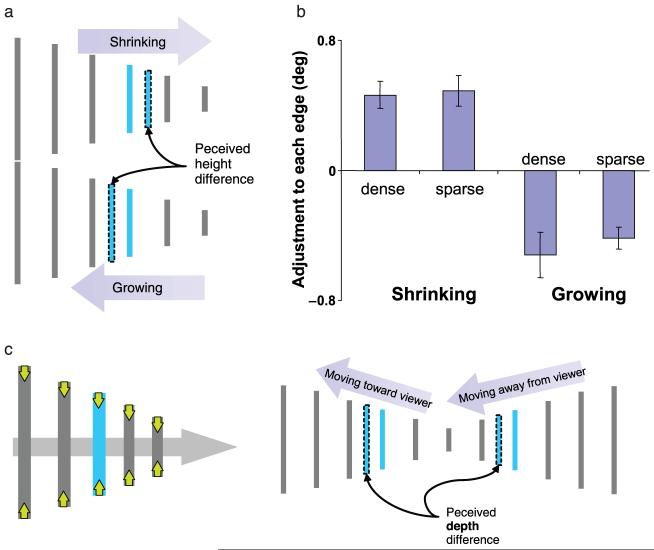Figure 6.
Can motion signals differentially bias the perception of individual edges of a moving object? (a) Stimulus based on Cai and Schlag (2001). Aligned, equally sized blue bars flashed during opposite trajectories of gray bars (one translating horizontally and shrinking, the other translating the opposite direction and growing) will appear not only horizontally offset but also of different heights. Bar with dashed border represents perceived position. Nine bars in each stream, 2.1° apart. Direction of motion and initial height offset randomized. (b) Feature-flashed bars in opposing streams (one shrinking and one growing) were presented repeatedly. Observers used a method of adjustment to change the height of one of the streams until the heights of the simultaneous blue bars appeared equal. n = 3, 15 repeats per observer, randomized heights and directions. Average height adjustment was 0.94°, or 0.47° per edge (top and bottom). (c) Two hypotheses for the height deformation quantified in Panel b. Left, motion signals are specific to individual edges of the moving object. Note that the motion signals after the feature flash determine the perception. As shown by Cai and Schlag, if the shrinking bar suddenly begins to grow after the feature flash, the blue bar will appear larger, not smaller. Right, motion biasing of the height may also be conceived as adjusting height estimates of objects moving toward or away from the viewer. Arrows show a possible interpretation by the visual system.

